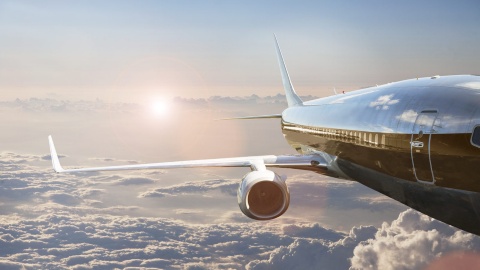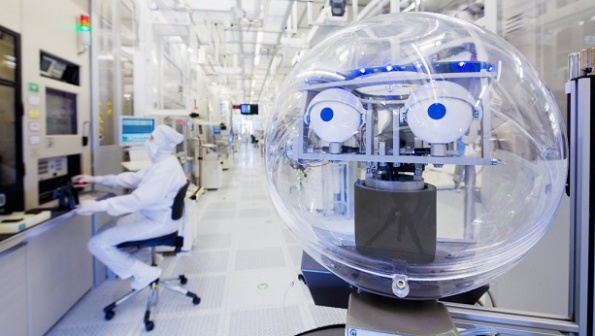
Reliability is everything in space exploration. Semiconductors must not only survive the long journey to space intact, they must also work perfectly around the clock once they have reached their destination. For example, it took the New Horizons space probe nine and a half years to travel five billion kilometers to the dwarf planet Pluto, finally reaching its destination on July 15, 2015. The Curiosity Rover took eight and a half months to get to Mars. It landed on August 6, 2012 and started sending back color photos to earth. Based on the results of these missions, it was certainly worth the wait. Find out more about two of the farthest-flung and most fascinating projects of our time.
Mission possible
Tradition, courage and high reliability build a path to success in space
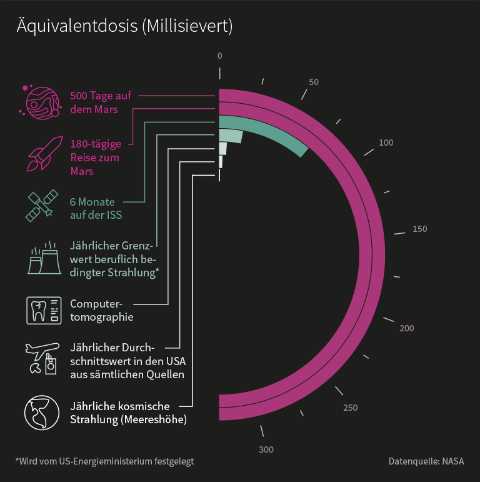
Building on the pioneering achievements of past missions such as Sputnik, Vostock, Mercury, Gemini and Apollo, today’s scientists are using the latest technological innovations to explore space in more detail than ever before. Today’s unmanned spacecraft are powerful enough to open up new horizons – literally. So it seems fitting that the space probe which flew by Pluto on July 15, 2015 is named New Horizons. This is the first terrestrial projectile to reach the boundaries of our solar system.
IR HiRel has been playing a key role in space exploration for more than twenty years now. The IR HiRel engineers have provided reliable support for over 2,000 different missions. They’ve exceeded client expectations on more than one occasion with a portfolio of high-reliability semiconductor components that include DC-DC converters, voltage regulators, power transistors, diodes and ICs.
Spacecraft are exposed to enormous amounts of radiation. A six-month trip to Mars, or 500 days spent on the planet, corresponds to a millisievert level of 300. Six months on the ISS would be around 90 millisieverts. By comparison, radiation levels on earth are generally under 1 millisievert, although they may be higher in certain regions.
High Reliability
With IR HiRel, the name says it all – and high reliability is exactly what you get. These special semiconductors are specifically engineered for use under extreme conditions. In other words, for missions where service technicians can’t just swing by to fix a problem. You will find HiRel products in aerospace, in underwater and underground installations and in medical equipment. In these environments, reliability can mean the difference between life and death – and can make or break extremely cost-intensive projects.
IR HiRel specializes in space systems, commercial aviation, oil and gas drilling, undersea telecommunications and defense. All of these areas demand zero-defect quality standards. IR HiRel uses sophisticated test procedures to meet these uncompromising standards.
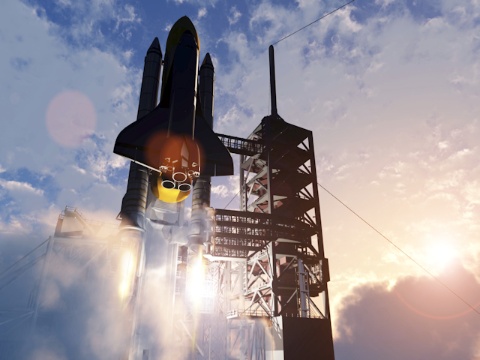
Curiosity
The Mars Rover fascinates the world
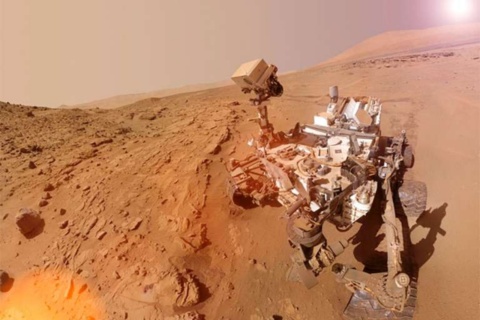
The Curiosity Rover is a technological masterpiece. It is a high-tech lab on six wheels crammed into a vehicle no larger than a mini-SUV here on earth. Over 500 components from IR HiRel are on board. On August 6, 2012, Curiosity landed on Mars as scheduled. Since then, it has been using its special cameras (including panorama and microscope cameras) to take spectacular images. The rover also uses these cameras to navigate. Its robotic arm takes soil and stone samples while a small on-board nuclear power system keeps Curiosity supplied with energy. Here you can follow Curiosity in real time.
The Curiosity project is headed up by Peter Theisinger and Richard Cook. In 2013, the two scientists made it onto Time magazine’s list of the 100 most influential people in the world – in the Pioneers category, of course.
Cosmos to earth: five things that make life difficult for space engineers
Spaceships, space probes, earth satellites and space stations are all used to collect important information. But there are many obstacles that have to be overcome to ensure these objects can send data back to earth without any technical hitches. The following five factors are key challenges that astrophysicists, technicians, engineers and mathematicians at IR HiRel face on a daily basis:
Distance: The distances involved in space travel are huge. Spacecraft have to traverse vast stretches of space and then transmit information back to earth. As spacecraft make their way further out to the edges of our solar system, it takes longer for commands to be executed, making control increasingly challenging.
Radiation: Cosmic radiation is a serious issue. Semiconductors are sensitive to radiation and require special design and processing to perform adequately in space environments
Pressure: Although there is no gravity in space itself, material has to withstand extreme increases and drops in pressure on the journey into space.
Temperature: Temperatures can drop to as low as minus 220 degrees Celsius in space. However, in sunlight, near the earth and the moon, the external temperature of a spacecraft can reach temperatures of 150C. When re-entering the earth’s atmosphere, temperatures can reach 1,650 degrees Celsius, though heat shields help to protect the electronics.
Energy: Projectiles such as New Horizons spend years or even decades in space. A small, on-board nuclear power plant known as a radioisotope thermoelectric generator keeps them powered up over these long periods.
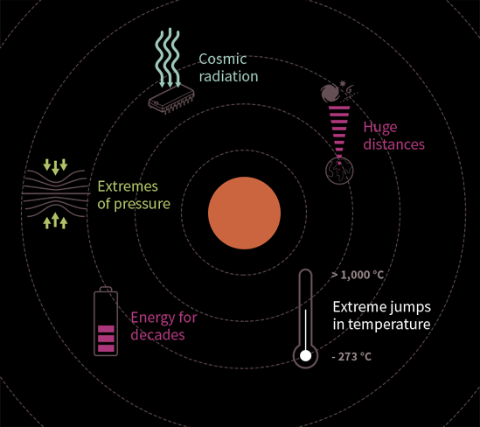
Nomen est omen: How Curiosity got its name
It costs around USD 645 million to develop a rover for the exploration of Mars. In projects like this, the golden rule in PR is to get the taxpayers on board as early as possible. To ensure the public was emotionally engaged with the mission, NASA held a competition to find a name for the rover.
Clara Ma found out about the competition purely by chance in December 2008 when she was eleven years old. She had finished her schoolwork earlier than expected and was leafing through a school magazine when she came across the NASA article. Although she did admit to being afraid of the dark, this bright young student was no stranger to curiosity and was always asking herself questions such as “Why is the sky blue?” or “Why am I me?” At the time, Clara was a sixth grade student at Sunflower Elementary School in Lenaxa, Kansas – a state with the fitting motto of “Ad astra per aspera” or in other words: “To the stars through difficulties”.
Curiosity is an everlasting flame that burns in everyone's mind.
And so that day, when Clara got home from school, she headed straight to her room, where she wrote her essay in just ten minutes on her computer. She showed her proposal to her sister who thought it good enough to submit. In her diary, Clara wrote that she wasn’t even that interested in winning; she just wanted the rover “to do lots of cool stuff on Mars and have a really good name”.
In April 2009, Clara was named the competition winner. Her entry was chosen from 9,000 submissions, including proposals from high-profile experts and luminaries in the field of astrophysics. As a result, she was able to sign her name directly onto the rover. Even today, Clara still describes herself as an “environmentalist, space-enthusiast, TEDxYouth speaker, namer of robots on other planets, something of a dreamer” on her Twitter profile.
Clara Ma’s Essay
“Curiosity is an everlasting flame that burns in everyone’s mind. It makes me get out of bed in the morning and wonder what surprises life will throw at me that day. Curiosity is such a powerful force. Without it, we wouldn’t be who we are today. When I was younger, I wondered, ‘Why is the sky blue?’, ‘Why do the stars twinkle?’, ‘Why am I me?’, and I still do. I had so many questions, and America is the place where I want to find my answers. Curiosity is the passion that drives us through our everyday lives. We have become explorers and scientists with our need to ask questions and to wonder. Sure, there are many risks and dangers, but despite that, we still continue to wonder and dream and create and hope. We have discovered so much about the world, but still so little. We will never know everything there is to know, but with our burning curiosity, we have learned so much.”
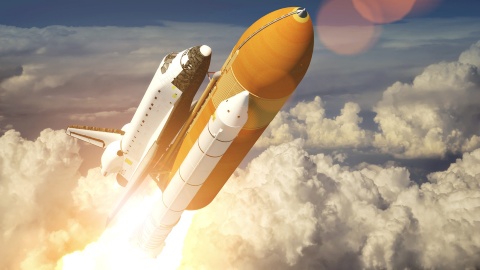
Of Martians and human settlements
The fascination of the universe
The universe has always fascinated mankind with its unending expanse, spectacular galaxies and planets shrouded in legend. Planets such as Mercury, Venus, Saturn, Jupiter, Neptune and Mars were incredibly important to ancient cultures. Mars’s distinctive red-orange appearance – caused by iron oxide on its surface – prompted the Romans to name the planet after their god of war.
The Red Planet
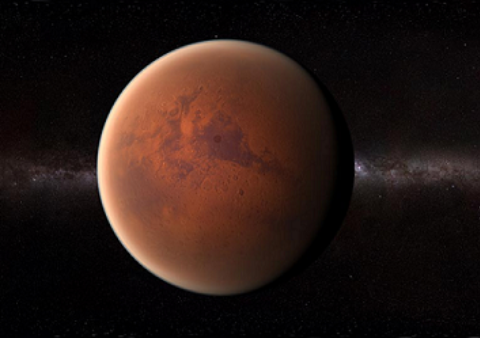
It wasn’t until recently, however, that we discovered that Mars is an earth-like planet. Today we also know that there is frozen water on the Red Planet. These discoveries have fueled very different dreams and aspirations: What if Mars were suitable as an extraterrestrial home? Could it support astrobiological life or even serve as a home for humans as our resources on earth dwindle?
We may not have found any little green men on Mars, but there is certainly no lack of ideas as to how we could make the planet habitable for humans. 3D printers are playing an important role here.
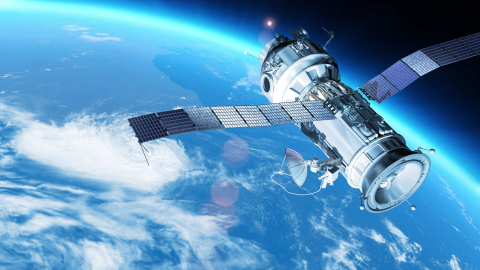
IR HiRel space projects
IR HiRel up close and personal with space VIPs and celebrities
IR HiRel products are used in many different missions. The list of Very Important Projects and space “celebrities” reads like a who’s who of recent space history and includes Curiosity, Hubble, Gaia, ISS and New Horizons. Here you can find an overview of these projects.
Our products are represented in nearly every space project.
Social media goes to outer space
Curiosity and New Horizons on social networks
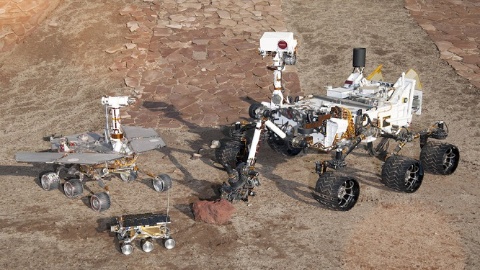
Today, planets and missions are celebrities in their own right. They have millions of fans on social networks and high-profile supporters. For example, Brian May, former lead guitarist of the band Queen, is one of New Horizons’ biggest fans. May has a doctorate in astrophysics and was appointed an official science collaborator on the project.
Despite this celebrity endorsement, Mars is still the biggest planet in the Twittersphere – all thanks to Curiosity. With over 2.2 million followers on Twitter and 1.1 million followers on Facebook, Curiosity is light years ahead of New Horizons which has a ‘mere’ 414,000 Twitter followers and ‘just’ 272,000 Facebook friends.
Curiosity at Twitter and Facebook
New Horizons at Twitter and Facebook
Last update: November 2016
